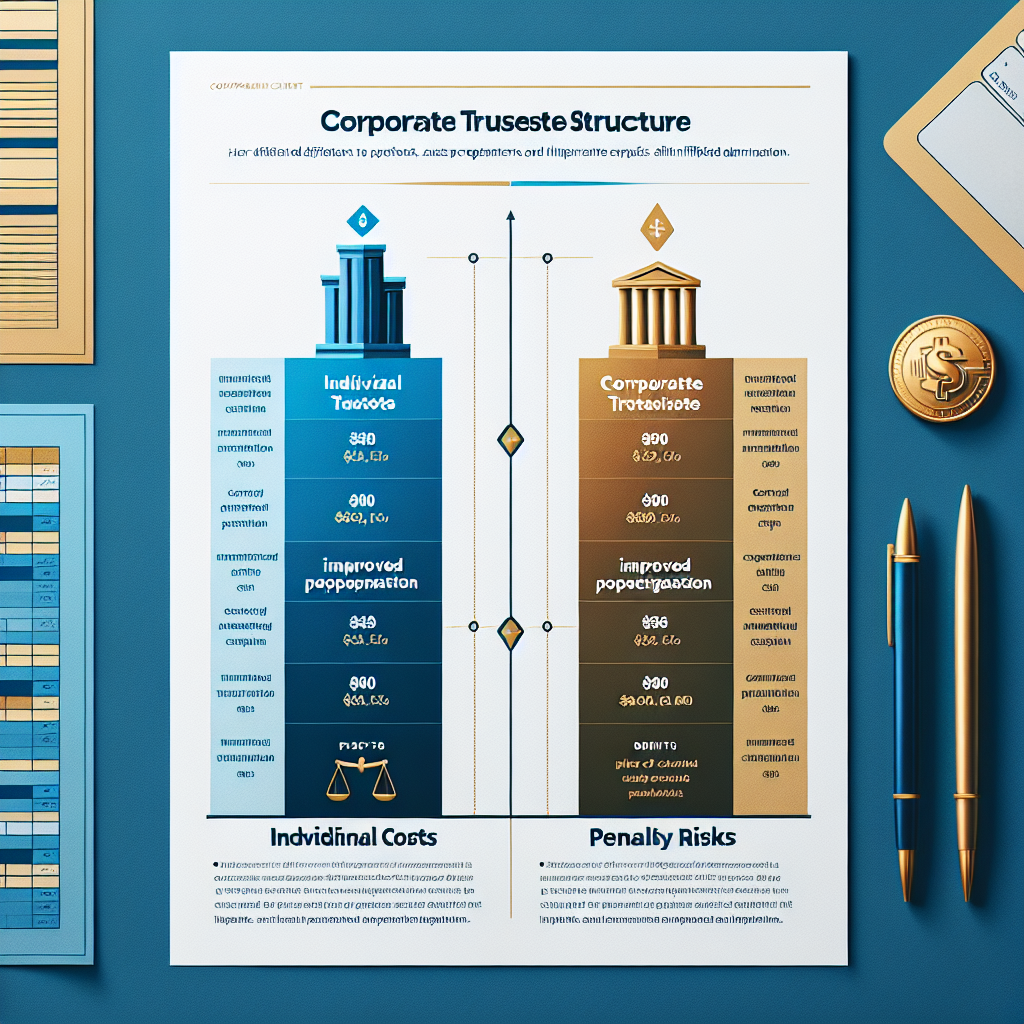Have you ever felt that your retirement savings could be working harder for you? Or perhaps you’ve wondered if there’s a way to have more control over your financial future? If you’re nodding along, establishing a Self-Managed Super Fund (SMSF) might be the game-changer you’ve been looking for.
An SMSF isn’t just another financial acronym—it’s a powerful vehicle that puts you in the driver’s seat of your retirement planning. Unlike traditional superannuation funds where investment decisions are made by fund managers, an SMSF gives you direct control over how your retirement savings are invested, managed, and grown.
Why Consider SMSF Establishment?
The beauty of SMSF establishment lies in its flexibility and personalization. You’re no longer restricted to the investment options offered by retail or industry super funds. Instead, you can tailor your investment strategy to align perfectly with your financial goals, risk tolerance, and timeline.
“Taking control of your retirement savings through an SMSF is like building your own financial kingdom,” says Mark Thompson, a seasoned SMSF trustee. “It’s empowering to make decisions that directly impact your financial future.”
Recent statistics show that Australians are increasingly recognizing this value, with over 600,000 SMSFs currently operating across the country, managing assets worth more than $700 billion. That’s a significant portion of Australia’s total superannuation assets, highlighting the growing popularity of this retirement savings approach.
The appeal is clear: freedom, flexibility, and the potential for greater returns. But with great power comes great responsibility. The good news? The legal complexities that might seem intimidating at first can be navigated smoothly with the right guidance and understanding.
The Legal Framework: Simpler Than You Think
Many potential SMSF trustees shy away from SMSF establishment due to perceived legal complications. While it’s true that compliance is crucial, the legal framework isn’t as daunting as it might initially appear.
An SMSF operates within the guidelines set by the Australian Taxation Office (ATO) and is governed by the Superannuation Industry (Supervision) Act 1993. These regulations exist not to restrict you, but to protect your retirement savings and ensure your fund operates with integrity.
With professional guidance and a clear understanding of your responsibilities, navigating these regulations becomes manageable. Remember, thousands of everyday Australians successfully manage their SMSFs—and you can too.
Your SMSF Establishment Blueprint: A Step-by-Step Guide
Let’s break down the SMSF establishment process into digestible steps that will set you on the path to financial freedom:
Step 1: Determine Your Eligibility and Suitability
Before diving into SMSF establishment, assess whether this structure aligns with your financial goals. Consider factors such as:
- The size of your superannuation balance (generally, a minimum of $200,000 is recommended to make an SMSF cost-effective)
- Your interest and capacity to be actively involved in managing your investments
- Your willingness to take on trustee responsibilities
- Your long-term retirement objectives
An honest self-assessment at this stage will save you potential headaches down the track. Remember, an SMSF isn’t suitable for everyone, but for those who value control and have the capacity to manage it, it can be incredibly rewarding.
Step 2: Choose Your SMSF Structure
One of the first decisions in your SMSF establishment journey is choosing between two trustee structures:
Individual Trustee Structure:
- Each member of the fund acts as a trustee
- Requires a minimum of two trustees (unless you’re a single-member fund with a second trustee)
- Less expensive to establish but may be more complex if membership changes
Corporate Trustee Structure:
- A company acts as the trustee of the fund
- Members are directors of the trustee company
- More expensive initially but offers better asset protection and simpler succession planning
While both structures are valid, approximately 80% of new SMSFs opt for a corporate trustee due to its long-term advantages in asset protection, administration, and succession planning.
Step 3: Create and Execute the Trust Deed
The trust deed is essentially the constitution of your SMSF—a legal document that outlines the rules for operating your fund. This document covers:
- Who can be a member
- How trustees are appointed or removed
- How benefits are paid
- How disputes are resolved
- Investment powers of trustees
“Your trust deed is the backbone of your SMSF,” explains financial advisor Sarah Chen. “It’s crucial to have this document professionally prepared to ensure it’s legally valid and tailored to your specific needs.”
The trust deed must be properly executed by all trustees, dated, and stamped according to the requirements of your state or territory. This isn’t a do-it-yourself document—engage a legal professional specializing in superannuation law to draft it correctly.
Step 4: Register Your Fund
Once your trust deed is in place, it’s time to register your SMSF with the relevant authorities. This involves:
- Applying for an Australian Business Number (ABN)
- Registering for Tax File Number (TFN)
- Electing to become a regulated fund with the ATO
- Registering for Goods and Services Tax (GST) if your SMSF’s annual turnover exceeds $75,000
These registrations can typically be completed online through the Australian Business Register, but many trustees choose to have their accountant or SMSF specialist handle this step to ensure everything is done correctly.
Step 5: Open a Bank Account
Your SMSF needs its own bank account to receive contributions, earnings, and pay benefits and expenses. This account must be completely separate from your personal finances to maintain the integrity of the fund.
When opening this account, ensure it’s in the name of the SMSF trustees as trustees for the fund. For example, “John Smith and Jane Smith as trustees for the Smith Family Superannuation Fund.”
Step 6: Create an Investment Strategy
A well-documented investment strategy is not just an ATO requirement—it’s a roadmap for achieving your retirement goals. Your strategy should consider:
- The risk and return profile of your investments
- Diversification across asset classes
- The liquidity needs of your fund
- Insurance requirements for members
- The age and retirement needs of all members
“Your investment strategy doesn’t need to be complicated,” advises retirement planning expert Michael Wong. “But it does need to be thoughtful, documented, and reviewed regularly to ensure it continues to meet your evolving needs.”
This document guides your investment decisions and demonstrates to regulators that you’re managing your SMSF responsibly. It’s not set in stone—you can update it as your circumstances change or as you gain more confidence in your investment knowledge.
Step 7: Roll Over Existing Super
With your SMSF fully established, you can now transfer existing superannuation balances from your retail or industry funds. This process involves:
- Contacting your existing super funds for rollover forms
- Providing your SMSF details, including its ABN and bank account information
- Completing the necessary paperwork to authorize the transfer
Be mindful that rolling over your super may have implications for any insurance coverage you hold through your existing funds. Consider whether you need to arrange alternative insurance coverage through your SMSF or other means.
Ongoing Trustee Responsibilities: Maintaining Your Path to Financial Freedom
SMSF establishment is just the beginning of your journey. As a trustee, you have ongoing responsibilities that are crucial for keeping your fund compliant and on track toward your financial goals.
Record-Keeping: The Foundation of Compliance
Maintaining accurate and comprehensive records is non-negotiable for SMSF trustees. This includes:
- Financial statements
- Tax returns and regulatory reports
- Investment transactions
- Member contributions and benefit payments
- Minutes of trustee meetings and decisions
- Insurance policies
“Good record-keeping isn’t just about satisfying the ATO,” says compliance expert David Zhao. “It gives you clarity on your fund’s performance and helps you make informed decisions about future investments.”
Consider using specialized SMSF administration software or engaging an SMSF administration service to streamline this process. The small investment in proper administration can save you significant time and potentially costly compliance issues.
Annual Compliance Tasks
Each year, your SMSF must:
- Prepare financial statements
- Arrange an independent audit by an approved SMSF auditor
- Lodge an SMSF annual return with the ATO
- Pay any applicable levies or taxes
These tasks have strict deadlines, and non-compliance can result in penalties. Many trustees work with accountants or SMSF specialists to ensure these requirements are met accurately and on time.
Regular Strategy Reviews
Your investment strategy isn’t a “set and forget” document. As market conditions change and your retirement horizon draws closer, your strategy should evolve accordingly.
Schedule regular reviews—at least annually—to assess:
- How your investments are performing against your objectives
- Whether your asset allocation remains appropriate
- If your insurance needs have changed
- Whether any regulatory changes impact your strategy
These reviews ensure your SMSF remains aligned with your changing circumstances and continues to serve your best financial interests.
Navigating Challenges with Professional Support
Even with the best preparation, questions will arise as you manage your SMSF. This is where professional guidance becomes invaluable.
“The most successful SMSF trustees recognize they don’t need to be experts in everything,” observes retirement planning specialist Jennifer Kumar. “They build a network of professionals—accountants, financial advisors, and legal experts—who can provide guidance when needed.”
This approach aligns perfectly with Aries Financial’s philosophy of integrity, expertise, and empowerment. While an SMSF puts you in control, having access to specialized knowledge ensures you can navigate complexities confidently and make informed decisions.
The Aries Financial Approach: Empowered Control with Expert Guidance
At Aries Financial, we understand that SMSF establishment is about more than just creating a legal structure—it’s about empowering you to take control of your financial future while navigating the regulatory landscape with confidence.
Our approach combines technical expertise with personalized guidance, ensuring your SMSF not only meets all legal requirements but is structured to maximize your potential for financial freedom. We believe that with the right support, anyone can successfully manage their SMSF and build a secure retirement.
Conclusion: Your Journey to Financial Freedom
Establishing an SMSF is a significant step toward financial independence. While the process involves several important legal steps, it needn’t be overwhelming. With a clear understanding of the requirements and professional guidance where needed, you can navigate SMSF establishment smoothly and confidently.
Remember that an SMSF isn’t just a financial structure—it’s a powerful tool that puts you in control of your retirement destiny. By taking this step, you’re not just investing in assets; you’re investing in the freedom to shape your financial future according to your own vision.
Are you ready to take control of your retirement savings and embark on the path to financial freedom? With the right blueprint and support, your SMSF journey can begin today.

